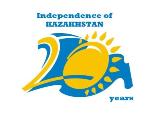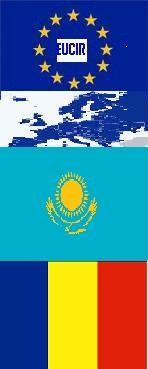An old proverb says that every man is an epoch, and rarely do we see such a confirmation in a life of a person as the embodiment of an era as in the life and work of Nurmuhammet Andalyp- the national poet of Turkmenistan.
Nurmuhammet Andalyp extensive work and the amplitude of the human knowledge field in which he had activated made him, maybe more than other contemporaries to feel that he was living the end of an age: the age of umma and the beginning of a new time-the time of nation states.
Nurmuhammet Andalyp : the national poet of Turkmenistan
At the cross roads of the XVII and XVIII centuries the Central Asia was involved in tremendous transformation ,that will pave the road for nation state and nation identity building.
The main configuration of this epoch, or trend if you prefer it so was the end of the Islamic ideal of umma embodied in the declined of the three major Islamic powers of that time: Persian Empire, Ottoman Empire and Mogul India.
All three major empires embodied the Islamic concept of umma of Islamic unity in political and religious action. The Ottoman Empire absolved this concept after Selim Yavuz campaign in Syria and Egypt at the beginning of XVI centuries that lead to the downfall of Mameluc State and to the transfer of Caliphate to Istanbul. From that moment the Ottoman Sultan raised claims until the end of Ottoman Empire at the end of First World War that he will speak as leader of the Faithfull and in their behalf.
The Persian Empire after safavid revolution and acceptance of shia`s as official doctrine did not accepted this as a limitation of his influence, just the opposite personalities like Shah Abass the Great or Nadir Shah tried to use this as an argument for an Islamic leadership of umma. Finally the Mongol Empire in India was also transmitting by art, history and ideology the message of being at the forefront of Islamic umma, as Emperor Humaiyun explained bluntly to Persian Shah, we are the true representatives o f Islamic action at the borders of Islam.
All this three attempt of recreating the Islamic umma, the ideal of a borderless, unified, cultural Islamic community was reaching his end. In India Mogul Empire was slowly but surely decaying on English control , in Europe ottoman empire was in disarray after the defeat at the walls of Vienna and finally the Persian Empire was suffering from internal conflicts and several external defeats .
This moment was clearing the way for the XIX century ideal of reform and of nationalistic agenda and for the ideal of a nation state and nation building. In this complex climate Nurmuhammet Andalyp is starting his existence. His education is clearly that of an intellectual of the Middle Ages, or of umma. Is based on tradition, on Koran and hadit`s analyses on study of Muslim, Bucara, Thirmidy, Ibn Marja and is reflected in his work of Jafar El Sadie –the great shier thinker and Imam.
So it is a conservative based education of religious horizons. The travel to Bagdad it is also an important part of this traditional Islamic education, the value of travel is highly regarded in Islamic education and a hadith says that you have to go even to China to acquire knowledge .So his education in Bagdad, even that information is scarcely is very possible and is the part of the Islamic upbringing. Ahmed Hogea Yassauy-the Kazakh national poet goes also on travel to Bagdad and Damascus.
A travel to Bagdad for education is exactly what Nurmuhammet needs for his work and image of this last age of search for a medieval type umma. The travel to Bagdad is probably enlarging his knowledge on fiqh-islamic jurisprudence and in kalam-islamic theology that are very clear notable in poems like Kyssai Furgun, that could be described as a perfect example of koranic based analyses of Moses role in Egypt and in Islamic theology. Undoubtedly there is a pronounced poetry structure into his poem but the knowledge of interpretation of Koran is clearly noticeable.
Also Nurmuhammet receives another emblem of typical Islamic upbringing, his practical works skill in carpentry and farming. The Islamic tradition requires, not as in Europe, a distain towards practice work, but in contrary a good knowledge of practice work. Sultan Mohammed the II Conqueror of Constantinople was an able arch builder, his father Sultan Murad a specialist in dwelling construction, no ruler could gain the respect of his followers without having practical skills.
Nurmuhammet practical skills are exactly a part of this necessary upbringing and wide horizons that Islamic education of the time was supposed to be imposed on pupils. Despite this Islamic-umma centered education Nurmuhammet destiny and works show us a personality that reached forward to destiny and to the future of his people: nation state building and ideology.
Oguznama – his main patriotic or nationalist opera is exactly the kind of opera that could stay at the bases of national renaissance.
The Greek national renaissance is based on the revival of Homeric Poems , Italy is looking at the roman empire in XIX centuries when is recreating his national unity, German are looking toward Barbarossa or even deeper in history at Arminius the legendary defeater of Rome , France is looking at Vercingetorix and the gauls . Turkmen are looking justly at Oguznama and Nurmuhammet Andalyp. By a stroke of genius the work that needs to create a national literature, to create national community of destiny was created.
The construction of national identity is preceding the nation state building because is offering the key elements to a nation state: a common history that is binding the people together with the same memory, the same common traces and emotions and personalities.
After a common history book a nation state needs a common language and Oguznama is offering exactly this – a common value history and a common standard of language. Dante `s language in Divina Comedia became modern Italian and the history that binds Italian people together, Oguznama became the same unifying factor in Turkmenistan history. Also a creation of national identity needs to draw a direction line, to set a standard for the evolution of a country and a people.
It is necessary to show them that in the past there is a perfect model for them. If they achieved greatness and prosperity once, they will achieve it again, it is what is called the authority citation – a historic proof of the viability of the state and his existence. Oguznama is offering exactly this authority quotation from history. In just 11 chapters Andalyp succeeded in offering the bases for national construction in the beginning of XVIII centuries in a perfect work that rather seems to be the fruition of XIX or XX century mind that an XVIII century vision.
The rest of Andalyp works are perfect example of an umma ideal sharing and of a perfect poet of his time. Kyssai Furgun and Sagdy Vkgas are both having the same Islamic impact and Koran exegesis in poetic terms that is making an age from medina to Otrar or from Agra to Istanbul.
Undoubtedly Andalyp vision is a special one as we see here a mixture of identifiable Shia tradition and folk story or Sunni respectability exegesis’s or even Sufi inclination. Jamal din Maulana Rummi influence is clearly pointed out, the Abu Muslim exegesis is also transparent but the great role of Andalyp in retelling a story old as earth and century the story of Moses is the reinterpretation and mixture of all this elements.
If he will just be satisfied with a Sufi vision or a Sunni vision or a shia interpretation than Andalyp will just have being a normal poet of Sufi or Sunni allegiance but no, his interpretation is so mixed that is becoming original and the old story of pharaoh is becoming dress in new clothes: the clothes of perfect poet-of Nurmuhammet Andalyp. This originality that survives in almost all of his works is I think traceable in his love for folklore, for popular poetry, extremely visible in Destan likes Leili Mejun.
Andalyp is not just a folklore or popular tales collector, he is not just repeating stories but he is enriching them and transformed old themes in philosophical analyses objects. He is not a troubadour in European concept, her is not just an enlighten in Sufi expression or just a regular court poet. His experience, his sturdy life is saving him from mediocrity every time and is placing him in the forefront.
One more time Andalyp is surpassing his age being closer to the XIX and XX century folk collectors that are putting the bases of national literature by collecting and updating g traditional folk stories and poems. Andalyp is doing exactly that unknowingly opening an era.
This tide rope walking between tradition and modernity is no where more visible as in Yusup –Zuleiha Destan. The Destan is written at the request of Shirgazi Han, ruler of Kiva between 1715-1723. This seems to be the beginning of any arab or Islamic poetry in the Middle Age from Harun Al Rashid to Suleiman Kanuni , a ruler orders a love poetry and the poet reveals to the enchanting world a beautiful poem and his moths is filled by the caliph with pearls in recognition of his poetic achievements . Not here.
Andalyp escapes one more a common destiny, he does not receive the pearls but he creates a pearl. A jewel about sacred love and profane love, a contest between good and evil, between war and peace and a sharply and sad regarded on human destiny and life come from a man who nicknamed himself as THE POOR-GARYP. Yusup Zuleiha becomes just the pretext of a love poem and is transformed in political analyses and in a declaration, a manifesto of his poetic and humanist ideals of patriotic ardor and peace.
In this destan is his all life comprises: a medieval type ruler asks for a medieval theme and composition and Andalyp pretending that is complying with the subject and traditional structure of a poem celebrating love is creating a poem manifesto.
How can we regard Andalyp work? Undoubtedly his patriotic and nationalist construction will guarantee his survival as long as Turkmen people will live, because Andalyp succeed something that only great poets succeed: to identify himself with his people so strong that no amount of time could separate them.
Also Andalyp remains an interesting personage, the last intellectual of umma in medieval shape and a messenger of a new world of nation’s states. A poet of love and a poet of political stance and manifesto. The last of courtly poets and the first national poet. All this are true and untrue in the same time because as Andalyp escaped any classification 300 years ago he still eludes us today. Why?
Maybe because Andalyp will always be the poet of Gull-of a flower, the flower of Turkmenistan independence and power and glory and this does not require any classification just an appreciation. Andalyp and Turkmenistan will always be one staying proud before centuries.
Professor Dr. Anton Caragea -MA, FINS











You must be logged in to post a comment.